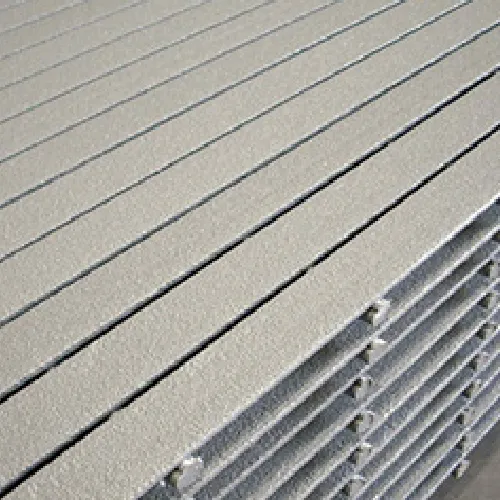loading...
- No. 9, Xingyuan South Street, Dongwaihuan Road, Zaoqiang County, Hengshui, Hebei, China
- admin@zjcomposites.com
- +86 15097380338
- Welcome to visit our website!
frp profiles
Understanding FRP Profiles A Comprehensive Overview
Fiber-Reinforced Polymer (FRP) profiles have emerged as a revolutionary material in various industries due to their unique properties and versatility. These composite materials, primarily composed of a polymer matrix reinforced with fibers—usually glass, carbon, or aramid—offer a combination of high strength, lightweight, corrosion resistance, and flexibility. This article explores the fundamental aspects of FRP profiles, their applications, advantages, and the factors driving their increasing popularity in modern engineering.
What Are FRP Profiles?
FRP profiles are shapes and forms manufactured from fiber-reinforced polymers. They can be produced in various configurations, including sheets, rods, and complex shapes, to meet specific structural requirements. The production of FRP profiles typically involves the process of pultrusion, where continuous fibers are pulled through a resin bath, then cured and shaped. This method ensures uniformity in the material properties and dimensions, making them suitable for precision applications.
Key Advantages of FRP Profiles
1. Lightweight One of the most significant benefits of FRP profiles is their incredibly low weight compared to traditional materials like steel and aluminum. This lightweight nature facilitates easier handling, transport, and installation, reducing labor costs and improving efficiency during construction.
2. High Strength-to-Weight Ratio FRP profiles exhibit impressive mechanical properties, often surpassing those of traditional materials. Their high strength-to-weight ratio makes them ideal for applications where structural integrity is critical without adding excessive weight.
3. Corrosion Resistance Unlike metals, FRP profiles do not corrode in the presence of moisture, chemicals, or UV exposure. This inherent resistance to environmental degradation extends the lifespan of structures and reduces maintenance costs significantly.
4. Design Flexibility The versatility of FRP materials allows them to be molded into various shapes and sizes, accommodating intricate designs and specific load-bearing requirements. This design flexibility opens opportunities for innovative architectural solutions.
frp profiles

5. Thermal Insulation FRP profiles offer excellent thermal insulation properties, making them a suitable choice for applications where temperature control is essential, such as in the construction of energy-efficient buildings.
Applications of FRP Profiles
FRP profiles find applications across a broad spectrum of industries
- Construction Used in bridge decks, retaining walls, and building facades, FRP profiles enhance structural integrity while reducing overall weight. Their resistance to fatigue and corrosion makes them ideal for demanding environments, such as coastal areas.
- Transportation In aerospace and automotive industries, FRP profiles contribute to weight reduction, ultimately improving fuel efficiency and performance. Components made from FRP are utilized in aircraft, boats, and high-performance vehicles.
- Energy In the renewable energy sector, FRP profiles are increasingly used for wind turbine blades and solar panel mounts. Their lightweight nature aids in maximizing energy output and ensuring structural stability.
- Infrastructure Municipal utilities and infrastructure projects leverage FRP profiles for applications like piping and water treatment facilities due to their resistance to chemical attack.
Conclusion
The growing adoption of FRP profiles reflects a broader trend towards sustainable and efficient engineering practices. As industries increasingly prioritize lightweight, durable, and environmentally friendly materials, FRP profiles stand out as a versatile solution to modern engineering challenges. With ongoing research and development, the future appears bright for FRP technology, promising further innovations and broader applications across various sectors. As we continue to explore the capabilities of FRP profiles, their impact on construction, transportation, energy, and infrastructure will likely expand, paving the way for smarter and more resilient solutions.
-
GRP Structures: The Future of Lightweight, High-Performance EngineeringNewsJun.20,2025
-
FRP Water Tank: High-Performance Storage for Corrosive and Clean Water SystemsNewsJun.20,2025
-
FRP Square Tube: The New Industry Standard for Chemical and Structural ApplicationsNewsJun.20,2025
-
FRP Pultruded Profiles: The Ultimate Choice for Lightweight Structural StrengthNewsJun.20,2025
-
FRP Handrails: The Safer, Smarter, and Stronger Choice for Modern InfrastructureNewsJun.20,2025
-
FRP Grating: The Smart Solution for Durable, Lightweight Industrial FlooringNewsJun.20,2025
-
Why Choose a Galvanized Water Tank for Your Storage NeedsNewsMay.21,2025
